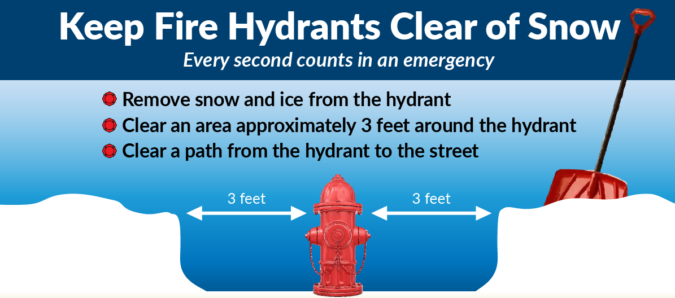
When shoveling a fire hydrant it is important to shovel not only the access to the hydrant from the roadway, but also 3-feet around the fire hydrant. Remember the “3 rules for 3 feet”:
1.) Access: When arriving at a hydrant, the “hydrant fire fighter” grabs the hydrant bag with all of the hydrant tools and adapters, and the large diameter supply hose that will get the water to the fire truck. The fire fighter must pull the supply hose for the back of the truck and will “wrap the hydrant” until the truck drives off. This keeps the supply hose anchored at the hydrant and keeps hose from getting drug down the roadway behind the pumper as it drives away.
2.) Room to Work: When affixing adapters, and “charging the hydrant” or turning on the hydrant, adapters and wrenches have a tendency to fall victim to gravity. This problem can be compounded by these items getting lost in the snow. Three feet is vital to quickly find a dropped piece of hardware.
3.) Safety: Some may ask, “Why do I need to shovel the back of the hydrant?” “They can get to the front of the hydrant.” When “charging the hydrant” or turning on the hydrant, for safety reason, the fire fighter MUST stand behind the hydrant. They will NEVER stand in front of the hydrant or to the side of the hydrant. If a hydrant cap, coupling or adapter were to not be securely affixed or become damaged, the water pressure could blow the cap, coupling or adapter off, causing injury to the fire fighter. Once again, having all sides (front, right, left and BACK) is vital for proper and safe hydrant operations.
If you have a hydrant on your property, we ask that you shovel your hydrant to help your local fire department. If you are unable to shovel your hydrant due to health reasons, etc., attempt to educate your neighbors about this “Adopt a Hydrant” program and ask them for assistance. If you have a neighbor who is elderly, or who otherwise can not shovel a fire hydrant, please offer to help shovel the hydrant on their property. In any event, we would like to stress, please seek permission to access another’s property.